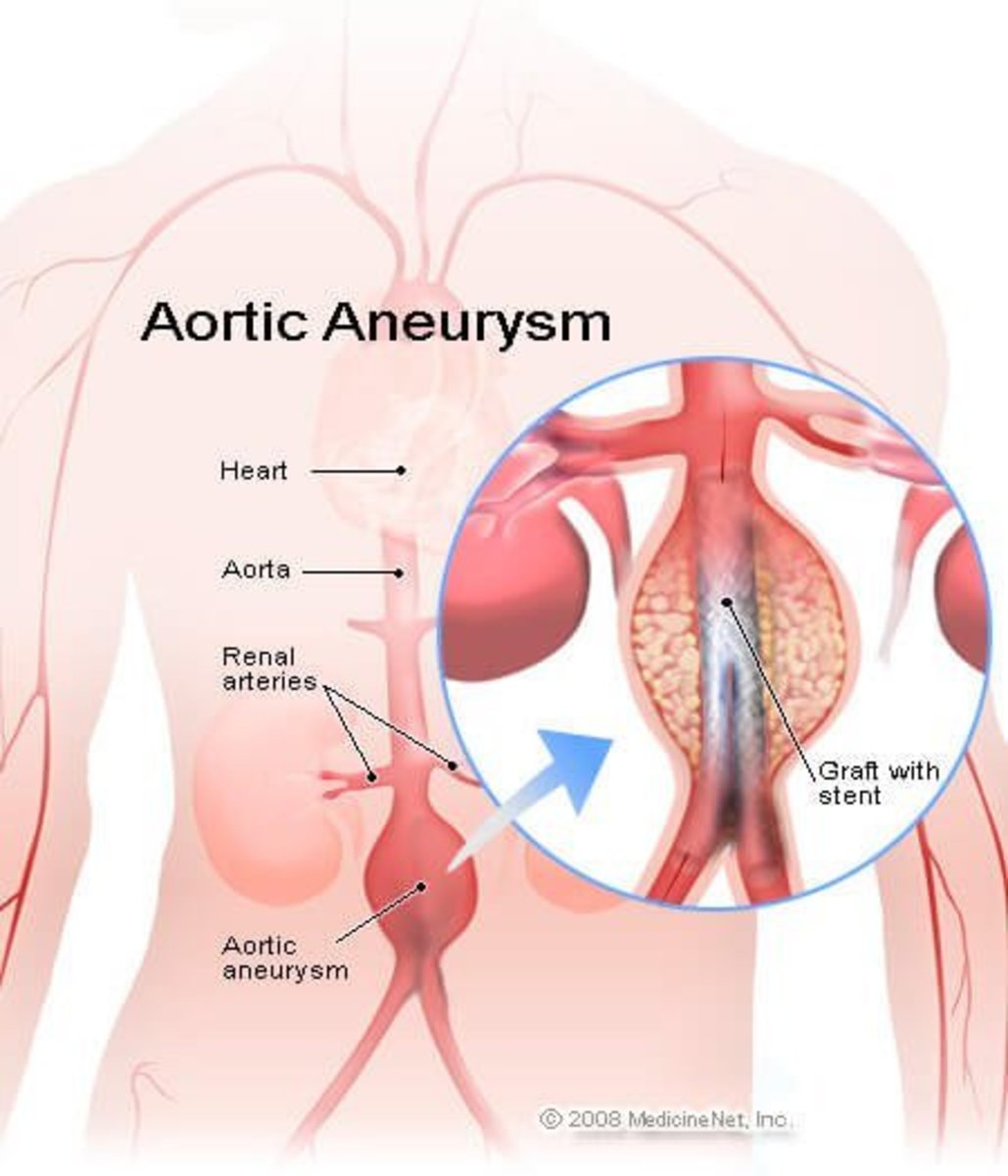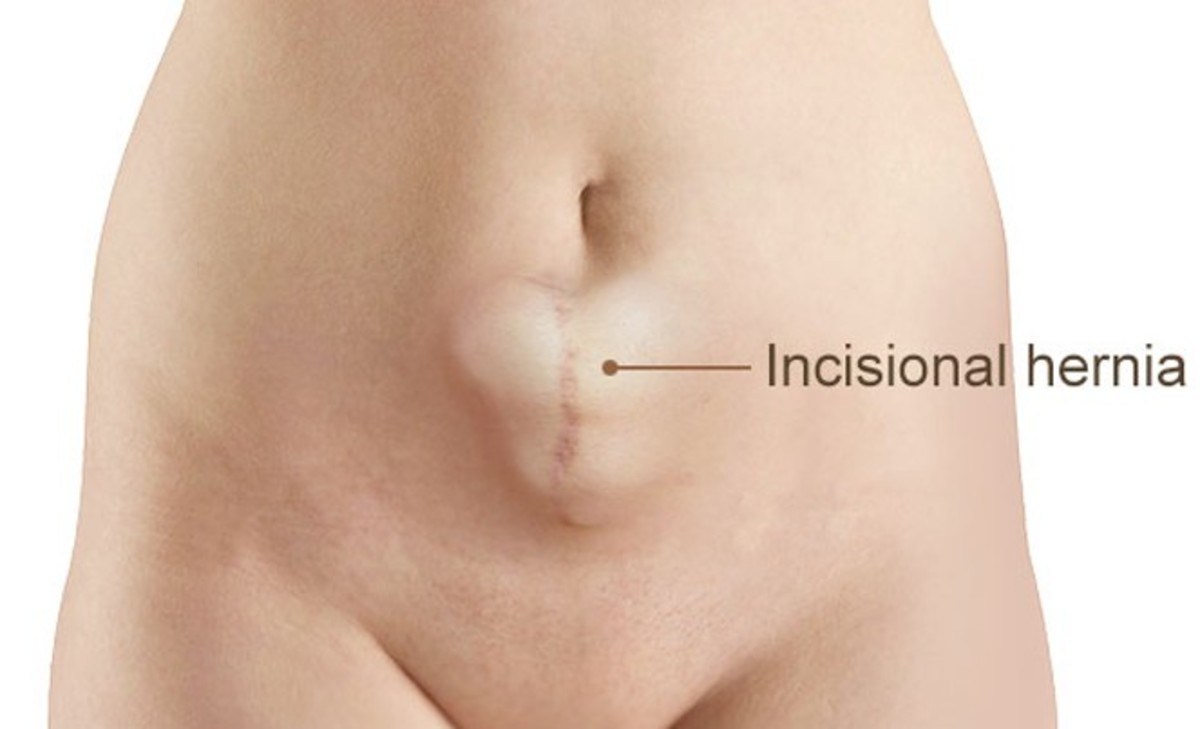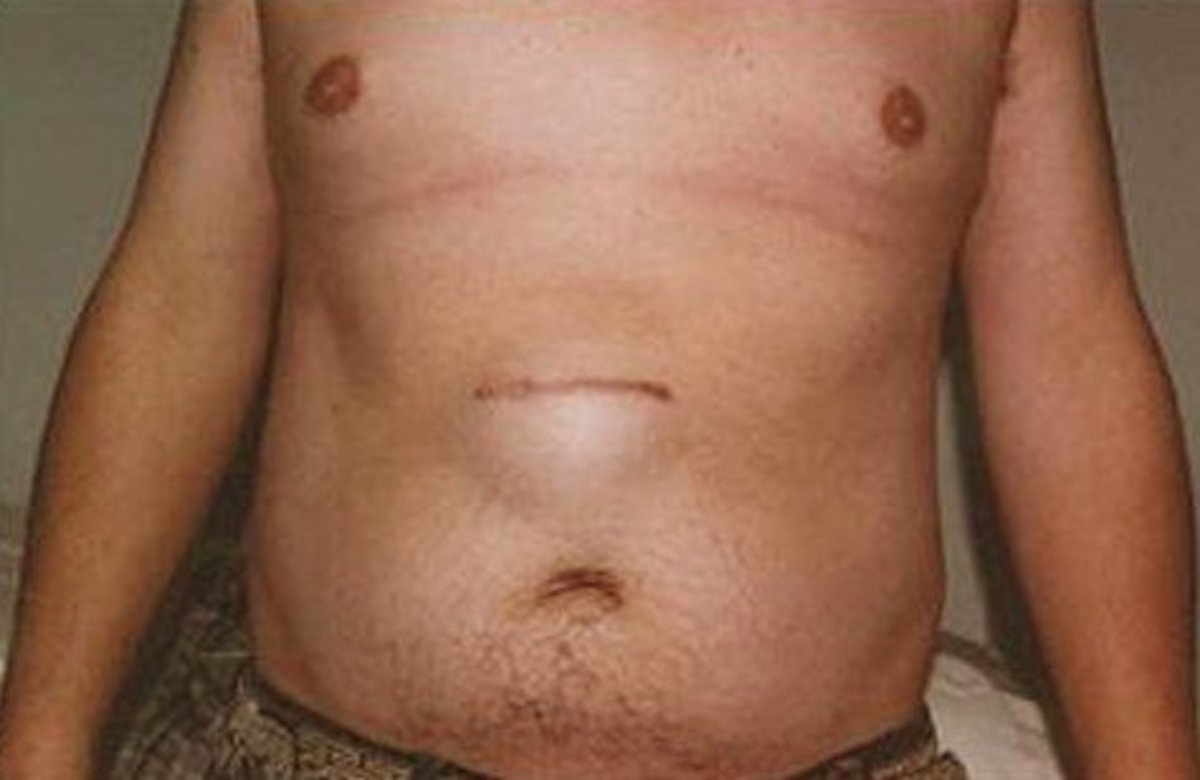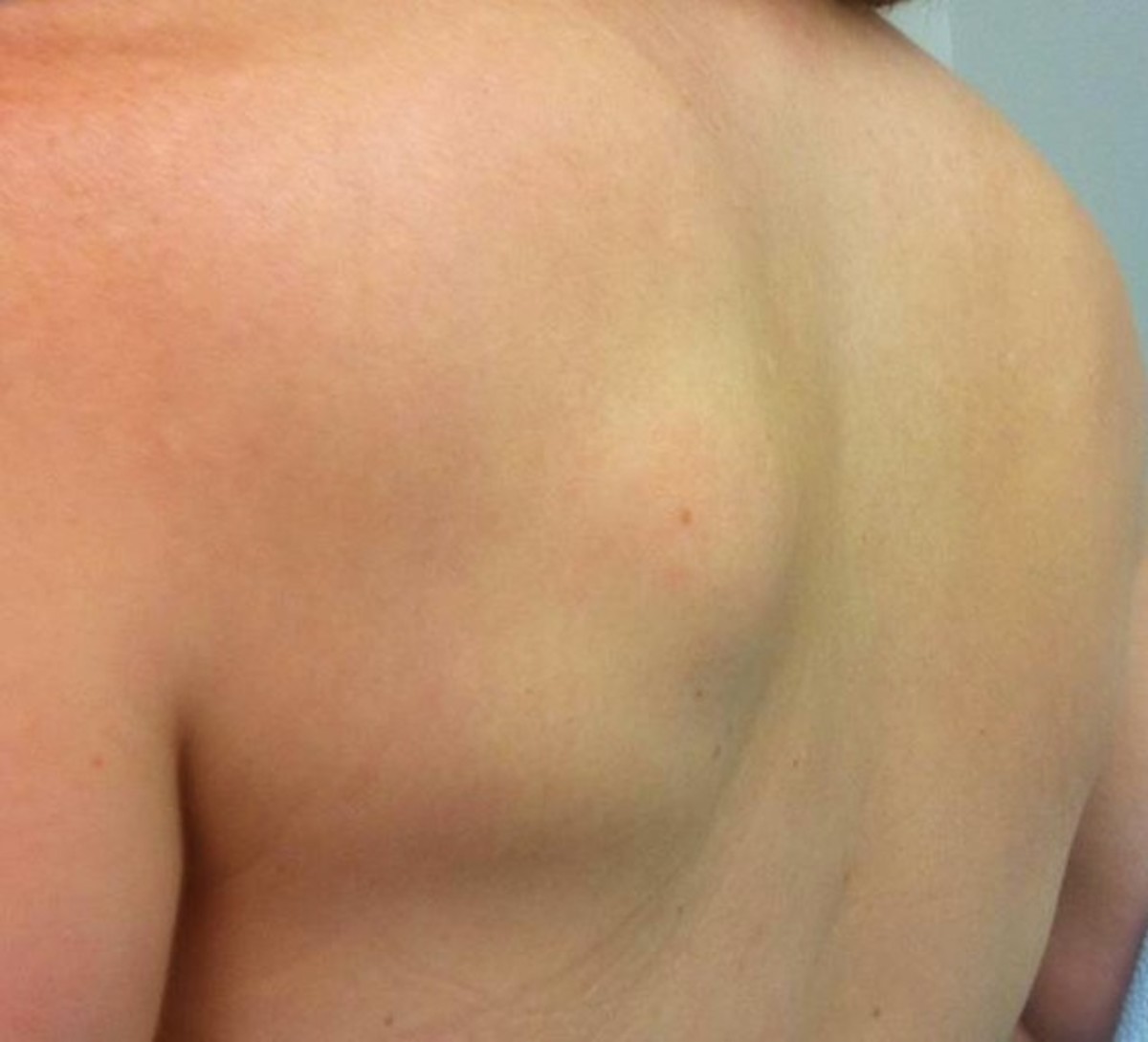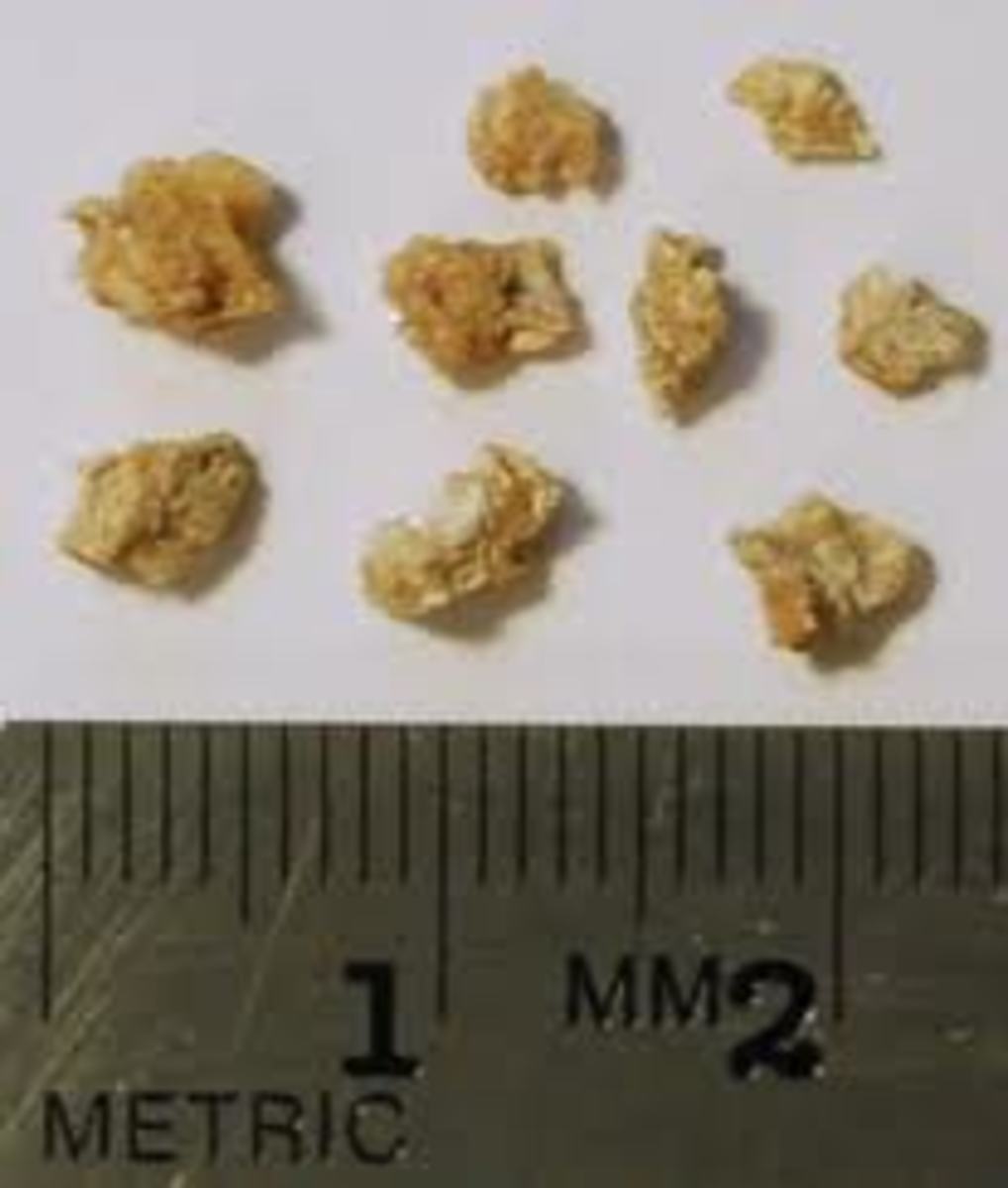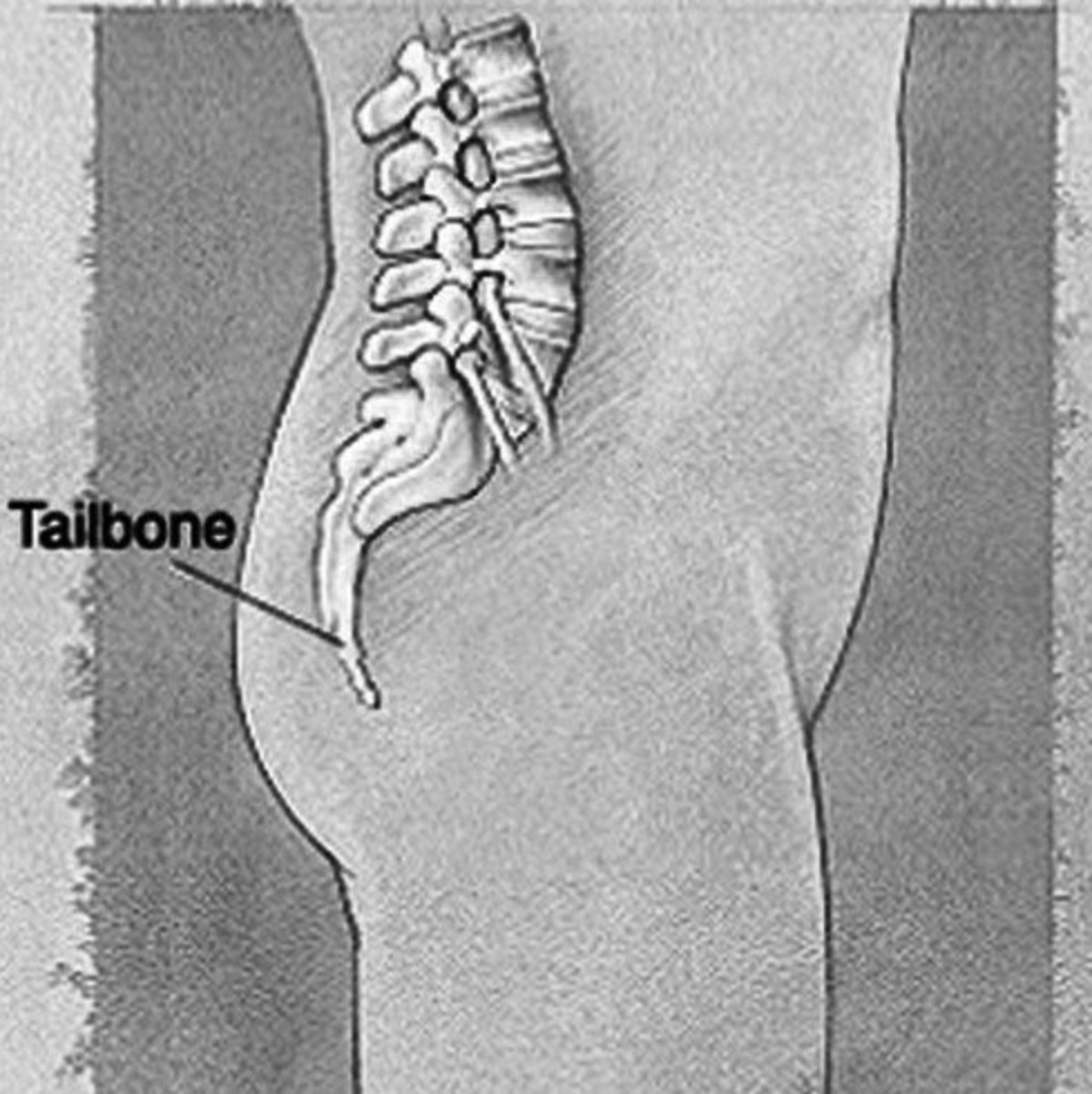Abdominal Aneurysms
What is AAA?
An abdominal aortic aneurysm occurs when your abdominal aorta, the largest blood vessel in your body, balloons out or dilates in the lower part. Over a period of time, this ballooning will get larger and become weakened. And, just like a balloon, once it's becomes too weak to be stable, it will burst or rupture. Many people live with aneurysms and they don't even know it. So, it's important to know the warning signs of this silent killer. In the United States alone, AAA is the 3rd leading cause of sudden death. AAA can be detected through simple, non-invasive radiological testing. Early detection of an abdominal aortic aneurysm can save your life. The abdominal aorta carries clean blood from the heart to the rest of your body. Blood loss through the abdominal aorta can cause immediate death. Know the early warning signs!
Are You at Risk?
The risk of having an abdominal aortic aneurysm increases once you've reached the age of 60. Vascular disease is also a factor. This condition is much more common in men than in women and of course hereditary conditions play a role. Most patient find out they have an abdominal aortic aneurysm while undergoing radiological testing for another condition. Be proactive with your health. The following list outlines the predisposing factors for AAA.
- You have a family history of abdominal aortic aneurysms
- You are a smoker
- You have high blood pressure
- You have high cholesterol
- You are over the age of 60
- You have been diagnosed with cardiovascular risk factors such as poor circulation in the legs
- You have congenital defects
Screening for abdominal aortic aneurysm can save your life. See your doctor today if you are at risk.
The Symptoms
Symptoms for abdominal aortic aneurysm can be similar to symptoms for other conditions. Therefore, it's important to get screening if you are at risk for AAA. Some people with abdominal aortic aneurysms don't even know they have the condition because they are asymptomatic. This means that they don't experience any symptoms at all. Others report unexplained lower back pain that is severe in nature and pain or tenderness in the abdomen or chest. Abdominal aortic aneurysm can be treated succesfully if detected early.
Some aneurysms are found through regular physical exams with your doctor due to the bulge or mass that has formed in the abdominal region. If you suspect that you might have an aneurysm see your doctor.
Treatment Options
Getting treatment for your aneurysm can range from simple to extensive depending on its size and the location of it. Your overall health may play a factor in treatment of your abdominal aortic aneurysm. The best way to determine the aneurysm size is to undergo a non-invasive radiological ultrasound of the abdomen or CTA which is an CT Angiography. An ultrasound is similar to what pregnant women undergo to determine how the fetus in their womb is growing. A CTA is different, though. During a CTA dye is injected into the bloodstream to watch how it flows through the vessel. X-ray is used during this study. You must fast for at least 8 hours prior to your ultrasound or CTA so that your technician can get a clear view of your abdomen. Once the size of your aneurysm is determined, your doctor will review with you the course of treatment for it.
For example, if your aneurysm is small and does not warrant surgical intervention at the moment then your doctor may ask you to return every 6 months or so for a repeat ultrasound to compare to the previous one. This would indicate the rate at which your aneurysm is growing. And, if your aneurysm is at a size that would be considered operable, then your doctor will review with you what surgical choice is best for you.
There are 2 surgical options for treatment of an abdominal aortic aneurysm:
- Endovascular Repair
- Open Repair
Endovascular repair of an abdominal aortic aneurysm involves your surgeon making a new path for the blood flowing through the aorta by placing an endovascular graft inside of the defective aorta. This graft is made to fit inside of the defective aorta and it's anchored in place where it will remain permanently. Endovascular repair of abdominal aortic aneurysms is a much less invasive procedure than open repair. Though, both procedures require an in-patient stay after surgery, with endovascular repair its possible that you can go home in as little as 1 day. Returning to work and normal activity can occur in just a matter of a few weeks too. Please know that only your doctor can determine if you are a candidate for endovascular repair of your abdominal aortic aneurysm.
Open repair of an abdominal aortic aneurysm is more complicated and has much higher risks than endovascular repair. It has been the method used for many years and is considered to be the traditional choice. Since this procedure is much more invasive, your hospital stay will be about a week. With this procedure your surgeon will make an incision into the abdomen to the level of the aorta and will replace the defective section of your aorta with a synthetic graft which he/she will suture into place at both ends of the remaining aorta. blood flow is temporarily stopped during this procedure, but will resume normally once the graft is placed. Recovery will take up to 90 days. You will return periodically to your surgeon's office for follow ups. Ultrasounds will be performed to monitor your progress.
All surgeries have risks and benefits. Be sure to ask about all of the risks of abdominal aneurysm repair.
Post Op Care
Remember to follow up with your surgeon as he/she requests. Usually, this will be every 6 months or so. It is imperative to your care that you do not fail to report to all follow up appointments as scheduled by your surgeon. Because you have a foreign body implanted it is possible that it may leak or get infected. Regular check ups are a huge part of your post op care plan.
This content reflects the personal opinions of the author. It is accurate and true to the best of the author’s knowledge and should not be substituted for impartial fact or advice in legal, political, or personal matters.

